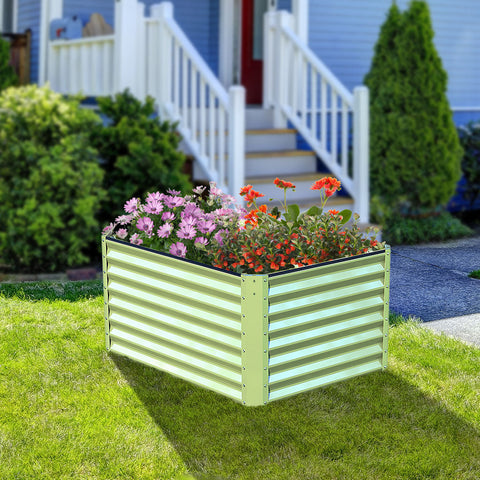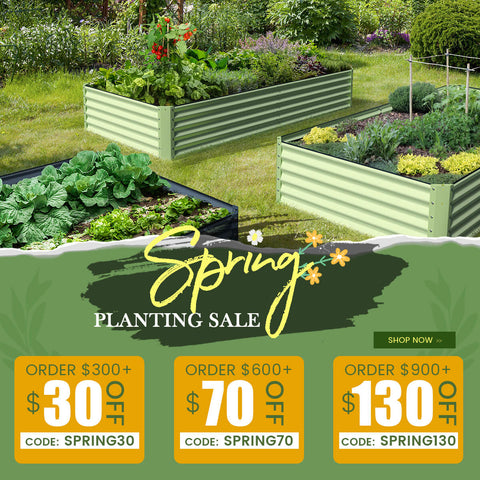Light up your spring garden with these flowering annuals and perennials.
Use these planting suggestions to start your spring garden, which will immediately add a cheerful color to your containers and flower beds. Go to the local garden center and fill your cart with these beautiful annual and perennial plants. They will match well with other morning flowers that have already bloomed in your yard, including saffrons, daffodils, and tulips. Then, as more brief flowers gradually wither, these seven spring flowering plants will continue to be exhibited until summer arrives.The following content also has some reference value for raised garden beds.
- Pansies and Violas
The smiling faces and colors of violets and pansies are irresistible. Pansies are the bigger show off version of their small and exquisite viola cousins. Although they look delicate, they can handle one or two cold currents calmly and grow easily in cool seasons. These flowers come in various bright to soft colors and are usually the first sign of spring in the center of the garden.
When the temperature no longer drops below 40 ° F at night, stabilizes at 60 ° F during the day, or the soil temperature exceeds 45 ° F, place the pansy plant underground. Although pansies are classified as biennial or perennial, they are usually cultivated as annual. If protected in winter, they may visit again in the following spring. Daisies and violets can be planted directly on the ground, leaving a cheerful color on the garden bed, but they can also thrive on the flower pots and window sills on the porch.
- Carnation
Like a pansy, carnation thrives in cool weather. This means that spring is the ideal time to plant these plants. Before planting, ensure that the outdoor temperature stabilizes at least 40 ° F. These flowers are usually very fragrant, with a hint of lilac in their fragrance. The color of carnation is usually pink, ranging from deep red to purple red, and then to lighter and more delicate tones.
If you see a hybrid or hybrid of carnation, please check the label to see if it is annual or perennial in your region. Also read the label for mature height. If you want a bedding, you can choose a shorter one, but for pruning gardens, you can choose a higher carnation
Be sure to plant carnation in a place where you can get at least 6 hours of sunlight every day. Remove perennial varieties and you will receive flower rewards from spring to summer. If you plant once a year and leave dying flowers on the plants at the end of the season, they can be re sown next year.
3.Snapdragon
There is no need to wait until the last frost before placing the goldfish grass in the ground. You can plant these annual beauties in the field a few weeks before the last frost in your area, as long as the soil is feasible and not too hard to freeze. Goldfish grass is the pillar of the cottage garden, with almost all the colors and tones of a rainbow. When they grow to three to four inches tall, pinch the stem back into two leaves, and the plant will branch more.
Although goldfish grass is one of the earliest flowering plants in spring, it cannot cope well with high temperatures. In a cool climate, they may bloom from spring to autumn. But in hot summer areas, goldfish grass will stop blooming. Plant them in a cool place and keep them happy for as long as possible. Removing used flowers will help to bloom again.
- Sweet Alyssum
This is one of the few early flowering annual plants that can be directly sown outdoors a few weeks before the last frost date. Alternatively, you can wait and find a piece of alysum that you can easily transfer to your garden when the weather is still cold. They can tolerate temperatures slightly below freezing point, but prefer air temperatures of 45-60 ° F. Check for heat-resistant varieties in the center of your garden - some types of alyssum will continue to bloom in warm weather.
Aromatic alyssum enjoys ample sunlight, although light colors are also acceptable. It will soon grow into a sea of small flowers, usually white, but also pink, violet, peach, and red. These plants are perfect for edging beds, sandwiched between rocks, or placed in containers and window boxes. Pollinator insects and other excellent garden insects are attracted to alyssum.
- Peristaltic Phlox
Like alyssum, prostrate Phlox vulga is a slow-growing plant that does not exceed 6 inches in height, but blooms with stunning colorful flowers in spring. However, the creeping oleander is a perennial plant, so you can expect it to return year after year. When it is planted in large quantities, it is particularly amazing (available in pink, purple, blue, and white). If planted after the last frost in your area, creeping oleander has the best effect, but grows in sunny conditions and will soon bloom in late spring.
- Nematodes
In containers and baskets, the Nemesia plant is a prolific flowering plant that can provide several months of color. The flowers look a bit like little goldfish or mini orchids, with a sunny yellow eye in the center. The new colors are very bright, including a slightly red plum color and a bright orange red color.
These annual magazines are hardly fussy because they don't need to pretend to be deaf or mute. However, in hot summers, these plants may become rough. As long as the flowers are cut off, when the autumn weather gets colder, they will bounce back and the colors will be brighter. Nemesia can be directly planted underground, but it must be planted in well drain soil, sunny areas, and preferably in a cool afternoon place.
- Hellebore
With so many new Hellebore hybrids, you will definitely find one or two to three that you cannot do without. Although famous for its downward flowers, some new varieties of flowers exhibit unique colors (metallic blue, deep purple, and even black). In addition, they also offer larger double layered flowers and unique colorful paper crumb patterns. This perennial plant is commonly referred to as the 'Leng Hua' and typically first appears in early spring, sometimes as early as February, and may bloom for several months.
Another additional benefit is that they thrive in the shade or partially shaded areas. It is best to purchase full size plants and place them underground when they no longer freeze.









